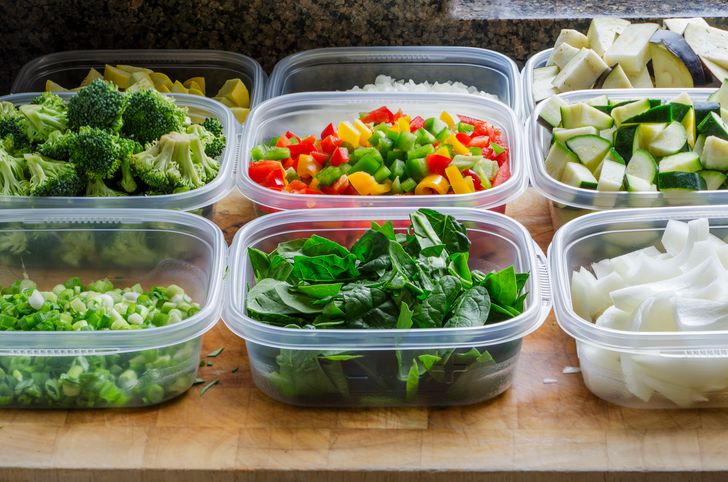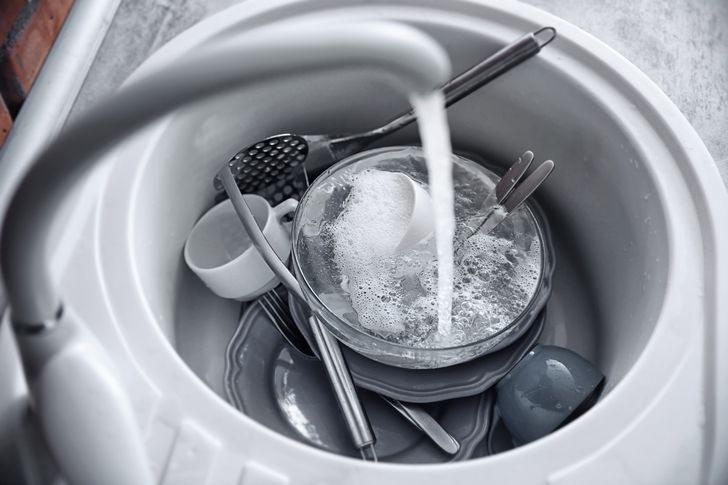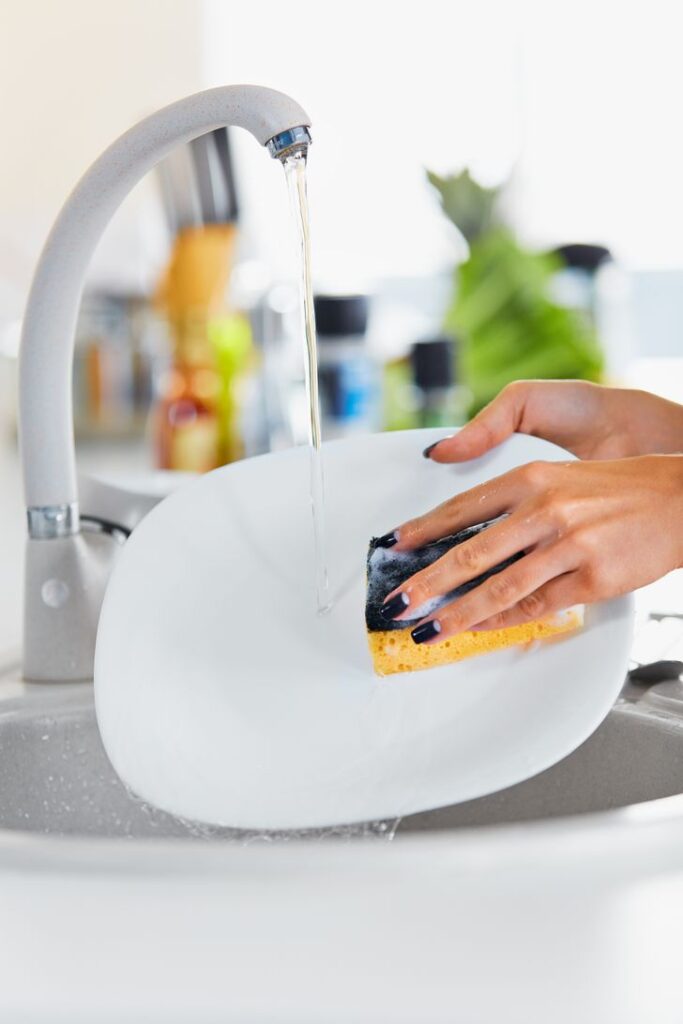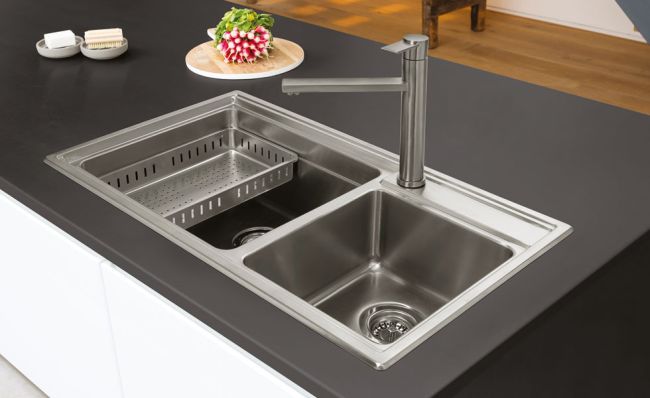Most Dangerous Things in Your Kitchen You Didn’t Know About
There are things we use in our kitchen every day. They are very ordinary and seem to be quite harmless, and we have never thought about how dangerous they can be. Bright Side decided to share this important information with you. It will definitely change some of your habits.
To make the plastic flexible, some manufacturers add special chemicals, which can cause serious health problems. We are pretty sure you don’t want these chemicals in your food or in your body.
If food particles from your dishes stay in your sink for some time, they start creating a breeding ground for bacteria like salmonella and many others. The kitchen sink can be a really dirty place.
Your knives should always stay sharp. If they are not sharp enough, they may slip when you try to cut something, damaging your hands or other body parts.
The average kitchen sponge grows bacteria very quickly. Rinsing it doesn’t prevent harmful pathogens from multiplying. To kill bacteria, you can microwave the wet sponge or soak it in diluted bleach for a couple of minutes. Or just put it in the dishwasher on the longest and hottest cycle.

How to Choose a Kitchen Sink
Choosing a sink which works for your lifestyle – not to mention complements your interior scheme – is key to the smooth running of the kitchen
Few of us today find ourselves chained to our kitchen sinks, washing up the dishes (thanks to our dishwashers), and yet the sink still plays a vital role within the modern-day kitchen.
Thinking about how you use a sink on a daily basis – and perhaps how sinks in previous homes have met or failed to meet your needs – is a good place to start when thinking about buying new. But the aesthetic a sink brings to the kitchen interior scheme is also a priority — the sink is after all a feature in its own right
Size and bowl configuration are among the first considerations.
If a sink is used very sparingly for tasks such as washing up, a single bowl (or ‘1.0’) may suffice. Single bowls are a good option for utility and/or boot rooms, and for kitchens short on surface space.
Many homeowners opt for 1.5 bowls and even two, which provide greater flexibility when it comes to tasks such as tipping away excess drinks whilst washing up, or for peeling vegetables.
Sink depth should be given some thought too. It’s often a case of striking a balance between a sink which will accommodate large pots, and one that isn’t so deep that it takes an age to fill up, or finds you uncomfortably leaning over, elbow-deep in water. If you’re opting for more than one bowl, choosing bowls of different depths offers flexibility.

THINGS TO KEEP UNDER THE KITCHEN SINK
This week’s organizing focus is the KITCHEN SINK. If you haven’t grabbed April’s FREE cleaning and organizing calendar yet, head on over to this post for a little more explanation.
Your challenge this week is to take 15 minutes to tidy up under your kitchen sink. Super simple task – empty it out, wipe it clean, toss or recycle anything that you no longer need or use, and put it back together.
If you feel like the area under your kitchen sink needs a little more love than that, here are 4 musts that I keep under my kitchen sink:
Kitchen Cleaning Supplies: Keep your kitchen cleaning supplies, tools, sponges, extra hand and dish soap, etc. under your kitchen sink. Easy access in the kitchen is key. I keep my sink scrub, cleaning recipe supplies, and other miscellaneous items under the sink to keep it handy for mixing up recipes too.
Lazy Susan: I had an extra one and popped it under the sink a year or so ago- total space saving game changer.
Containers to Hold Tools: If you have scrubbers or other little tools, use containers that can ventilate the tools properly in between uses.
Hook: If you use dish cloths, put a hook on the inside of your door to dry damp dishcloths. When they are dry, I put them in a laundry basket for dishcloths.

Kitchen Essentials List
If you’ve ever attempted to purchase cookware for a new kitchen or simply tried to improve the quality of tools in your current kitchen you’ve probably found that stocking up on high quality kitchen essentials is much more difficult than it should be.
And this makes sense, doesn’t it? Nowadays everywhere we look there’s someone telling us to buy their product that will supposedly make our lives easier. I’m sure all of the following sound familiar:
Cooking TV show hosts recommending their products
Branded cooking sets from your favourite celebrity chef
Kitchen stores stocking unusual, “one-trick-pony” items
Infomercials aggressively selling cheap gizmos
Kitchen websites promoting every item as a “must-have”
and so on. Instead of all this increased choice making our lives easier, it’s made it that much more difficult to separate the quality from the junk. So we decided to test all the kitchen equipment we could get our hands on to solve this problem and make stocking a minimalist, high-quality kitchen as easy as possible.
When we started our cooking journey, we were full of confusion and frustration as we began our search for the best cookware and essential kitchen tools for minimalist cooks. When you start with no knowledge, the learning curve is immense.
But after years of refining our cooking techniques, creating and testing simple recipes, learning how to plan our meals, and building a customizable meal planning service for busy folks like us, we learned exactly which tools one needs (and doesn’t need) to stock a fully functional and multi-purpose minimalist kitchen.

Things to Never Put Down your Kitchen Sink
Your kitchen sink may well be the right place for some of the items you’ve collected, but unless you enjoy routine visits from a plumber for sink repair, there are some things that just don’t belong in your drainpipes. Here are of the worst, and please don’t think that the fact that you have a garbage disposal will render them harmless.
Pasta
Your drainpipe has a fixed width. Once you put pasta down the drain, it continues to absorb liquid and swell, taking up more space than you could have predicted. The cause of the swelling is semolina, a flour made from durum wheat. For the same reason, you should never put flour down a sink drain.
Rice
Like pasta, rice will continue to take in water. Imagine a cup of uneaten rice, soaking in water, getting soggier and sticker by the minute. It’s not hard to see why you would not want such a substance in your pipes.
Egg Shells
Egg shells are a problem in two ways. If you grind them in the disposal, they become an abrasive substance that can actually dull the blades of your disposal. As they travel on, they contribute to a mass of material that can lead to a clog. If you’re trying to keep them out of the trash, they are an excellent addition to your compost pile.
Coffee Grounds
Word has it that plumbers count coffee grounds among the most common causes of kitchen sink drain clogs. You can put them in the trash, or if you are a gardener, you can put them around acid-loving plants such as azaleas, roses, blueberries, lilies and evergreens.